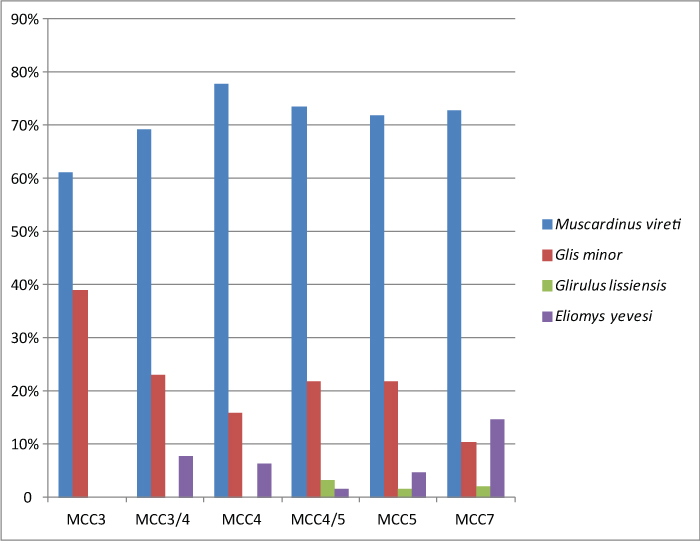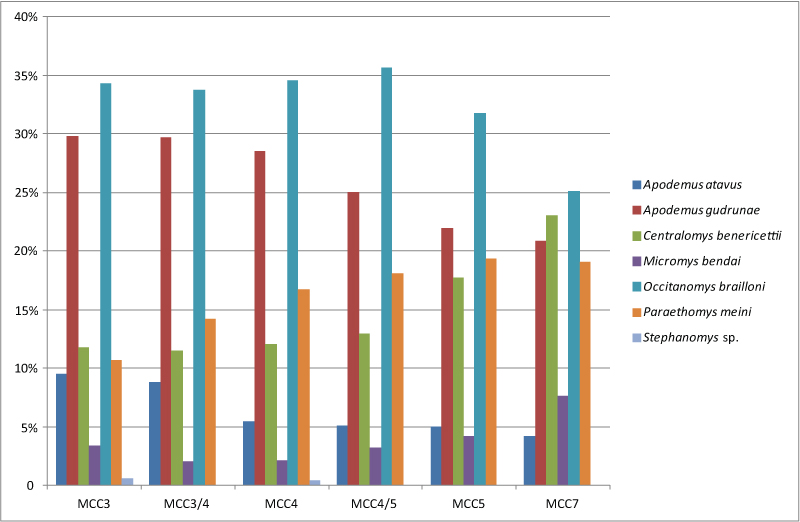FIGURE 1. Geographic and stratigraphic setting of the Tertiary Piedmont Basin (TPB). The star indicates the geographic positions of the fossiliferous site of Moncucco Torinese (MCC). Modified from Lozar et al. (2015).

FIGURE 2. Stratigraphic scheme of the Messinian succession of the Tertiary Piedmont Basin with the stratigraphic log of the studied section of Moncucco Torinese section. Fossiliferous assemblages are indicated with the abbreviation MCC. The arrows indicate the main stratigraphic event recorded in the section. For further details see Dela Pierre et al. (2007) and Angelone et al. (2011).

FIGURE 3. Gastropoda from Moncucco Torinese. 1-2. Cochlostomaesuanum: 1, lateral view of apex and protoconch (MGPT-PU 110978); 2: apertural view (MGPT-PU 110979). 3. ? Limax fossilis: dorsal view (MGPT-PU 110928). 4. Parmacella sp.: dorsal view (MGPT-PU 110931). 5. Lucilla miocaenica: apical view of paratype (MGPT-PU 108849). 6.Truciella ballesioi : fragment with aperture in apertural view (MGPT-PU 108851). 7. Nordsieckia pontica: apertural view (MGPT-PU 108848). 8. Acicula giuntellii: apertural view of holotype (MGPT-PU 108896). 9. Theodoxus doderleini : dorsal view (MGPT-PU 110959). 10.Theodoxus mutinensis: dorsal view (MGPT-PU 110962). 11. Melanopsis narzolina: apertural view (MGPT-PU 110967). 12. Melanoides curvicosta: apertural view (MGPT-PU 110965). 13. Saccoia cf. congermana: apertural view (MGPT-PU 108873). 14. Saccoia globosa: apertural view of holotype (MGPT-PU 108858). Scale bars equal 0.5 mm (1-2, 5-7) and 1 mm (3-4, 8-14).

FIGURE 4. Bivalvia from Moncucco Torinese. 1-4. Euxinicardium subodessae: external (1) and internal (2) views of LV (MGPT-PU 130575), external (3) and internal (4) views of RV (MGPT-PU 130576). 5. Pachydacna (Parapachydacna) sp.: umbonal view of RV (MGPT-PU 130577). 6-8. Pontalmyra bollenensis: 6, external view of RV (MGPT-PU 130578). 5, external (7) and internal (8) views of LV (MGPT-PU 130579). 9-10. Pontalmyra cf. incerta chiae: external (9) and internal (10) views of RV (MGPT-PU 130580). 11-12. Pontalmyra cf. partschi: external (11) and internal (12) views of RV (MGPT-PU 130581). 13-14. Prosodacnomya sabbae: external (13) and internal (14) views of RV (MGPT-PU 130582). 15-16. Pseudocatillus nevesskayae: external (15) and internal (16) views of RV (MGPT-PU 130583). 17-18. Pseudocatillus sp.: external (17) and internal (18) views of RV (MGPT-PU 130584). 19-20. Dreissena ex gr. rostriformis: external (19) and internal (20) views of RV, (MGPT-PU 130585). Scale bars equal 1 mm (1-5, 9-12, 15-18) and 5 mm (6-8, 13-14, 19-20). LV: left valve, RV: right valve.

FIGURE 5. Fish otoliths from Moncucco Torinese. 1.Benthosema aff. suborbitale (MGPT-PU 130304). 2. Diaphus befralai (MGPT-PU 130320). 3. Diaphus aff. rubus (MGPT-PU 130293). 4. Diaphus taaningi (MGPT-PU 130253). 5. Diaphus aff. pedemontanus (MGPT-PU 130288). 6. Diaphus splendidus (MGPT-PU 130308). 7. Hygophum aff. derthonensis (MGPT-PU 130275). 8. Myctophum coppa (MGPT-PU 130280). 9. Gadiculus labiatus (MGPT-PU 130324). 10. Physiculus sp. (MGPT-PU 130265). 11. Grammonus sp. (MGPT-PU 130273). 12. Hoplostethus cf. mediterraneus (MGPT-PU 130232). 13. Lesueurigobius sp. (MGPT-PU 130330). 14. “Trewasciaena” sp. (MGPT-PU 130246). 15. Sciaenidarum sp. nov. (MGPT-PU 130241). 16. Sciaenidarum sp. nov. (MGPT-PU 130263). 17. Argyrosomus sp. (MGPT-PU 130264). Scale bars: 1 mm.

FIGURE 6. Amphibians from Moncucco Torinese. 1-2. Albanerpeton sp.: right dentary (MGPT-PU 132003) in medial (1) and dorsal (2) views. 3-5. Chelotriton sp.: trunk vertebra (MGPT-PU 132302) in anterior (3), dorsal (4) and left lateral (5) views. 6-7. Lissotriton sp.: trunk vertebra (MGPT-PU 132306) in dorsal (6) and posterior (7) views. 8. Bufo gr. B. viridis: left ilium (MGPT-PU 132177) in lateral view. 9. Pelophylax sp.: right ilium (MGPT-PU 132317) in lateral view. 10. Hyla gr. H. arborea: left ilium (MGPT-PU 132201) in lateral view. 11-12. Latonia sp.: left angular (MGPT-PU 132314) in ventral (11) and dorsal (12) views. 13-14. Pelobates sp.: left ilium (MGPT-PU 132308) in medial (13) and lateral (14) views. Scale bars equal 1 mm.

FIGURE 7. Reptiles from Moncucco Torinese. 1-2. Crocodylia indet.: isolated tooth (MGPT-PU 132316) in labial (1) and mesial (2) views. 3-4. Testudo sp: eight peripheral (MGPT-PU 132048) in external view (3) and pygal (MGPT-PU 132050) connected to the eleventh peripherals (MGPT-PU 132051-52) in external view (4). 5-8. Mauremys sp.: entoplastron (MGPT-PU 132059) in ventral view (5), right epiplastron (MGPT-PU 132320) in ventral view (6), pygal (MGPT-PU 132057) in external view (7) and tenth peripheral (MGPT-PU 132342) in external view (8). 9. cf. Euleptes sp.: left maxilla (MGPT-PU 132432) in lateral view. 10. Agamidae indet.: tooth bearing bone (MGPT-PU 132438) in lateral view. 11-12. non- Anguis Anguinae indet.: vertebra (MGPT-PU 132612) in dorsal (11) and ventral (12) views. 13-16. cf. Lacerta sp.: right dentary (MGPT-PU 132501) in lateral (13) and medial (14) views and fused frontals (MGPT-PU 132532) in dorsal (15) and ventral (16) views. 17-19. Amphisbaenia indet.: trunk vertebra (MGPT-PU 132593) in dorsal (17), ventral (18), and left lateral (19) views. 20. Scolecophidia indet.: trunk vertebra (MPUT-PU 132027) in left lateral view. 21-22. Eryx sp.: caudal vertebra (MGPT-PU 132626) in anterior (21) and left lateral (22) views; 23-25. Colubrines A: trunk vertebra (MPUT-PU 132662) in dorsal (23), ventral (24), and posterior (25) views. 26-28. Colubrines B: trunk vertebra (MPUT-PU 132663) in dorsal (26), ventral (27), and anterior (28) views. 29-30. Vipera sp. (Oriental group): trunk vertebra (MPUT-PU 1320661) in left lateral (29) and posterior (30) views. Scale bars equal 1 mm (1-2, 9-30) and 10 mm (3-6)

FIGURE 8. Aves from Moncucco Torinese. 1. Palaeortyx cf. gallica: right carpometacarpus (MGPT-PU 127032), ventral view. 2. Coturnix sp.: left coracoid (MGPT-PU 130574), dorsal view. 3-4. Coliidae gen. et sp. indet.: right tarsometatarsus (MGPT-PU 127020), dorsal (3) and distal (4) views. 5,7,9. Strigidae gen. et sp. indet.: 5, right tibiotarsus (MGPT-PU 127018), cranial view; right tarsometatarsus (MGPT-PU 127019) in proximal (7) and dorsal (9) views. 6. Columbidae gen. et sp. indet.: right ulna (MGPT-PU 127017), ventral view. 8. Apodidae gen. et sp. indet.: left scapula (MGPT-PU 127014), lateral view. Scale bars equal 5 mm.

FIGURE 9. Large mammal remains from Moncucco Torinese. 1-2. Dihoplus schleiermacheri: 1, left upper second molar (MGPT-PU 127005), occlusal view; 2, left upper third molar (MGPT-PU 127004), occlusal view. 3. Dicoryphochoerini gen. et sp. indet.: right lower third premolar (MGPT-PU 130571), buccal view. 4-5. Tapirus arvernensis : 4, right lower molar (MGPT PU 130549), lingual (4) and occlusal (5) views. 6-7, 20-21. Gazella aff. G. pilgrimi: left hemimandible (MGPT-PU 125007), buccal (6) and occlusal (7) views; left maxillary fragment (MGPT-PU 130655), lingual (20) and buccal (21) views. 8-9, 12-13, 17. Pliocervus sp.: right hemimandible (MGPT PU 125008), buccal (8) and occlusal (9) views; right upper third premolar (MGPT-PU 130659), occlusial (12) and mesial (13) views; right metatarsal bone (MGPT-PU 127010), plantar view (17). 10-11, 18. aff. Palaeomeryx: left upper fourth premolar (MGPT-PU 130658), occlusal (10) and mesial (11) views; 18, left tibia (MGPT-PU 127009) dorsal view. 14-16, 19. Euprox sp.: left upper second molar (MGPT-PU 130668), occlusal 14) and mesial (15) views; 16, left lower third premolar (MGPT-PU 130671), occlusial view; 19, right upper canine (MGPT-PU 130664), buccal view. Scale bars equal 10 mm.

FIGURE 10. Large mammal remains from Moncucco Torinese. 1-2. Pliocervus sp.: fragmentary skull (MGPT-PU 130574), medial (1) and lateral (2) views. Scale bar equals 10 mm.

FIGURE 11. Large mammal remains from Moncucco Torinese. 1, 6-7, 10-13. Viverridae gen. et sp., indet.: fragmentary skull (MGPT-PU 130546), palatal view (1) and detail of P4 and M1 in occlusal view (6); 7, left upper canine (MGPT-PU 130573), buccal view; right lower fourth premolar (MGPT-PU 130654), occlusal (10) and buccal (11) views; 12, left radius (MGPT-PU 130572), dorsal view; 13, right metacarpal III (MGPT-PU 130512), dorsal view. 2-3. Euarctos pyrenaicus: left upper carnassial (MGPT-PU 130529), lingual (2) and occlusal (3) views. 4-5, 8-9. Pantherinae gen. et sp. indet.: left premaxilla (MGPT-PU 130545), lateral (4) and ventral (5) views; right tibia (MGPT-PU 130518), dorsal (8) and distal (9) views. 14. cf. Mesopithecus pentelicus pentelicus: right lower canine (MGPT-PU 130502). 15. cf. Macaca sp.: left lower third molar (MGPT-PU 130506). The figures 14 and 15 are from Alba et al., (2014). Scale bars equal 10 mm.

FIGURE 12. 1-3. Baranogale cf. helbingi from Moncucco Torinese. Left M1 (MGPT-PU136483). Mesial (reversed) (1), occlusal (2) and distal (3) views. Scale bar equals 1 mm.

FIGURE 13. Small mammals from Moncucco Torinese. 1. Stephanomy s sp.: left M1 (MGPT-PU 136460). 2. Occitanomys brailloni, left M1 (MGPT-PU 136607). 3. Paraethomys meini: right M1(MGPT-PU 136672). 4. Apodemus gudrunae: right M1 (MGPT-PU 136375). 5. Apodemus atavus: leftM1 (MGPT136898). 6. Micromys bendai: left M1 (MGPT-PU 136932) 7. Centralomys benericettii: left M1 (MGPT-PU 128090). 8. Neocricetodon magnus: left M2 (MGPT-PU136481). 9. Glirulus lissiensis : right m3 (MGPT-PU 136523). 10. Eliomys yevesi : left M2 (MGPT-PU 136582). 11. Muscardinus vireti : right m2 (MGPT-PU136504). 12. Glis minor: left M1 (MGPT-PU136555). 13. Pliopetaurista pliocaenica: left m1 (MGPT-PU 128218). 14. Hylopetes hungaricus: left M1 (MGPT-PU 136589). 15. Sciurinae indet.: left m1-2 (MGPT-PU 136590). 16. Sciurus warthae: right m1 (MGPT-PU 128221). 17. Talpa sp.: right P4 (MGPT-PU 131249). 18. Petenyia cf. hungarica: left m2 (MGPT-PU 131388). 19. Neomyini indet.: left emimandible (MGPT-PU 131123). 20. Parasorex aff. ibericus: right M2 (MGPT-PU 131025). 21. Leporidae indet.: right upper molariform (MGPT-PU 136477). 22. Prolagus sorbinii: right P4 (MGPT-PU 136475). 23. Castorinae indet.: left upper incisor in distal view (MGPT-PU 136482). 24. Hystrix depereti: right radius in ventral view (MGPT-PU 128349). Scale bars equal 1 mm (1-22) and 10 mm (23-24). Figures 13-14 and 16 from Colombero and Carnevale (2016).

FIGURE 14. Relative abundances of the families of small mammals (chiropeterans excluded) from Moncucco Torinese. Proportions are based on nNISP (normalized number of identified specimens, see Material and methods for further details). Castoridae and Hystricidae (not visible in the graph) are present only in samples MCC3 and MCC4 respectively with only a single specimen each and are not shown herein.

FIGURE 15. Relative abundances of the glirid species within each glirid assemblage from Moncucco Torinese.

FIGURE 16. Relative abundances of the murid taxa within each murid assemblage of Moncucco Torinese.

FIGURE 17. Variation of coefficients of the predictor variables of the Binary Logistic Regressions that model the probability of finding a specific murid taxon at MCC assuming the different layers as the only predictor variables. Blue dots indicate the values of the coefficients, bars indicate the 95% CI. MCC3 is chosen as reference category. For each of the identified taxa, the coefficients that are lower (or higher) than 0 indicate how much, respect to MCC3, that variable influences the probability (in terms of log odds) of finding that species at MCC. In other words, lower (or higher) coefficients of each variable (i.e., the given fossil assemblage) indicate that for that assemblage there are lower (or higher) probabilities of finding that species respect to MCC3. Significant statistical differences are obtained when the CI does not include the value 0. On the contrary, values approaching zero indicate that in that assemblage there are the same probabilities of finding that species that we have for MCC3. Stephanomys sp. is not included due to its rarity and not signifacant values. Additional information available in Appendix 8.

FIGURE 18. Distribution of habitats as indicated by the ecological preferences of small mammals (chiropterans excluded) from each assemblage of Moncucco Torinese.


